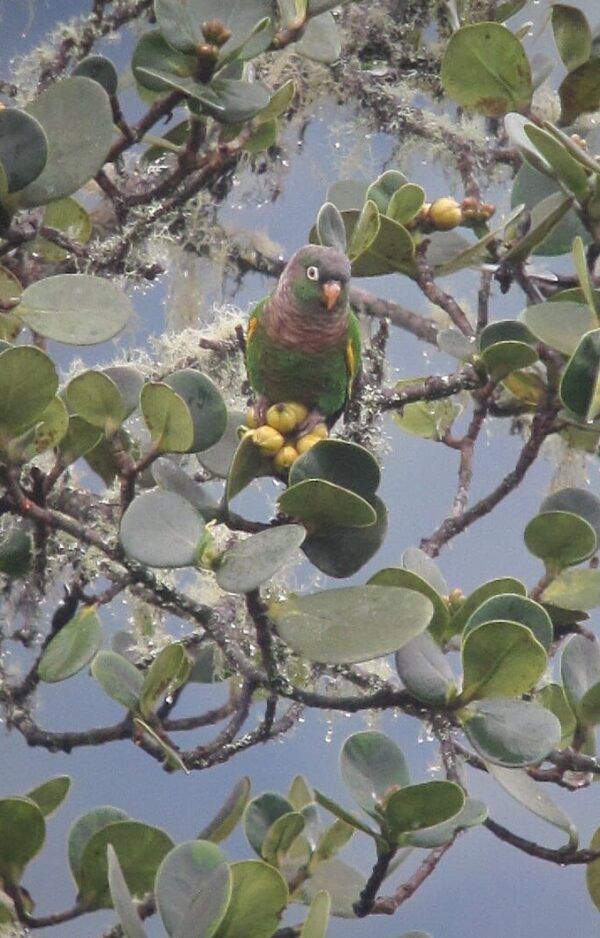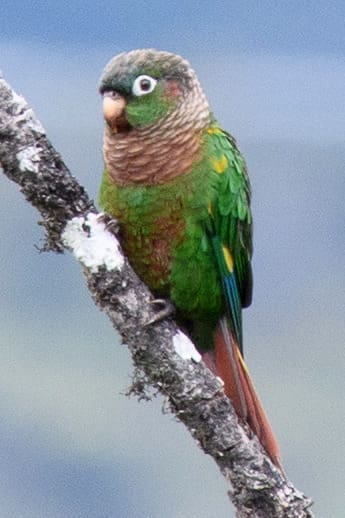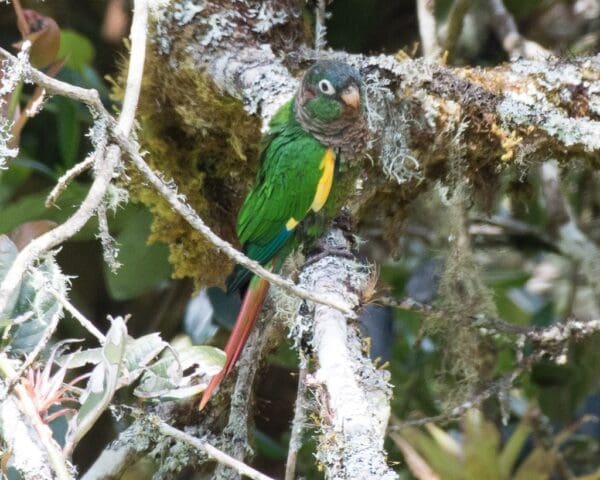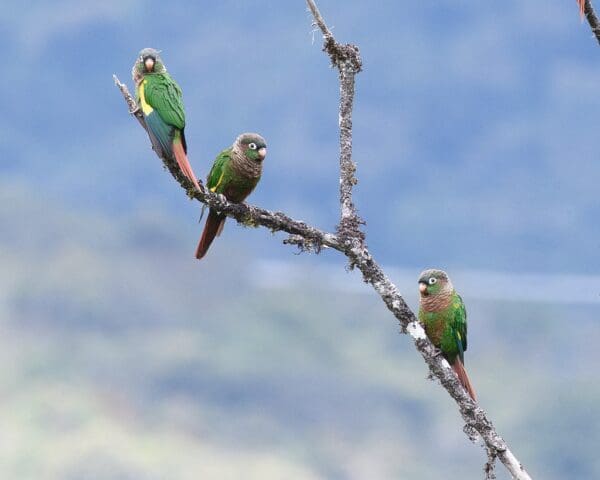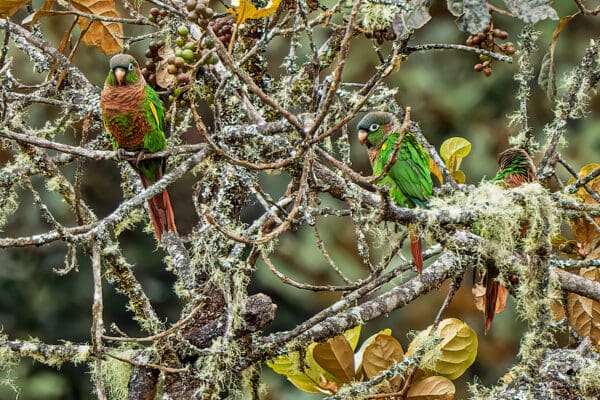Brown-breasted Conure
Also known as:
Brown-breasted Parakeet, Flame-winged Conure or Parakeet, Beautiful Conure
Also known as:
Brown-breasted Parakeet, Flame-winged Conure or Parakeet, Beautiful Conure
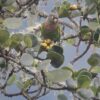
![© Nick Athanas [CC BY-SA 2.0] via Flickr A wild Brown-breasted Conure perches on a mossy branch](https://parrots.org/wp-content/uploads/2023/01/wpt_Brown-breasted-Conure_1337-1-100x100.jpg)
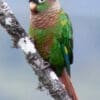

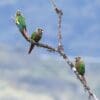
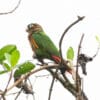
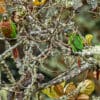
DID YOU KNOW?
This species can be found at relatively high altitudes, up to 3400 m (11,152 ft).

Pyrrhura

calliptera
Size:
22 cm (8.6 in)
Weight:
Probably 50-60 g.
Subspecies including nominate:
one
Colour Adult:
Both adults green body; red/brown ear coverts; red/brown breast, faintly barred paler brown and dusky black; yellow primary coverts and carpal edge; red/brown tail. Beak horn-coloured. Eye ring bare and white. Eye yellow.
Colour Juvenile:
As in adults but green primary coverts and carpal edge. Eye brown.
Call:
Calls in flight are harsh and are heard at long distances.
More Information:
Content Sources:
CITES
BirdLife International
Cornell Lab of Ornithology/Birds of the World
A Guide to Parrots of the World, Juniper and Parr, 1998
Parrots of the World, Forshaw, 2006. 2010 edition
Parrots in Aviculture, Low, 1992.
Parrots: Their Care and Breeding, Low, 1986.
Captive Status:
Not usually found in captivity.
Longevity:
—
Housing:
Enclosure 1 x 1 x 2 m (3.3 x 3.3 x 6.5 ft) with shelter, minimum temperature 10 C (50 F).
Diet:
Fruits such as: apple, pear, orange, banana, guava, mango, papaya, cactus fruits; vegetables such as: carrots, celery, green beans, peas in the pod; green leaves such as: Swiss chard, lettuce, kale, dandelion, sowthistle, chickweed; berries such as: mountain ash, elder and pyracantha; millet spray; soaked or sprouted sunflower; small seed mix such as: canary, millet, and smaller amounts of buckwheat, safflower, oats and a little hemp; cooked beans and pulses, boiled maize; complete kibble.
Enrichment:
—
Nest Box Size:
Vertical box 25 cm x 25 cm x 70 cm (10 x 10 x 30 in).
Clutch Size:
Not recorded.
Fledging Age:
—
Hatch Weight:
—
Peak Weight:
—
Weaning Weight:
—
World Population:
5000-10,000 individuals, decreasing.
IUCN Red List Status:
Vulnerable
CITES Listing:
Appendix II
Threat Summary:
A BirdLife “restricted-range” species. May be extinct on the entire W slope of the E Andes. This species is declining due to habitat loss from cattle grazing and burning for agriculture, and persecution as a crop pest. No international trade recorded and only light local trade. Present in Chingaza National Park and adjacent protected areas.
Range:
C Colombia.
Habitat:
Found from 1500-3400 m (4920-11,152 ft) in the upper subtropical and temperate zone cloud forest, other humid forest; also elfin woodland and paramo with bushes or scattered forest patches, and areas with shrubs, secondary growth, peatbog paramo and clearings.
Wild Diet:
Feeds on fruits of Cecropia, Clusia and Brunellia colombiana, blackberries Rubus and seeds of Espeletia uribeii and Cecropia. May take cultivated maize.
Ecology and Behaviour:
Gregarious; seen in groups of of 6-14 and sometimes more. Makes local altitudinal movements but otherwise is resident. Feeds mainly in trees and low bushes.
Clutch and Egg Size:
Not recorded.
Breeding Season:
August-October.
Related Links:
—
